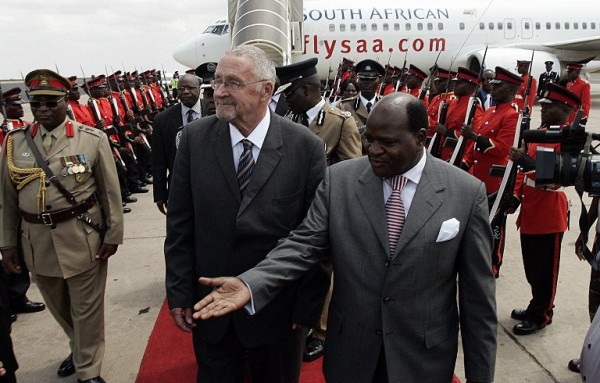When Michael Sata rose to power as Zambia’s president in 2011, he did so after vanquishing a political party, the Movement for Multi-party Democracy (MMD), that had dominated Zambian politics for two decades.![]()
The MMD, in turn, wrested power in 1991 from the United National Independence Party (UNIP), which controlled Zambia between 1964 and 1991 under its first post-independence, long-serving president Kenneth Kaunda (who is still alive today at age 91 and remains a relevant figure in Zambian politics).
So when Sata died last October, it wasn’t immediately clear that his ruling Patriotic Front (PF) would necessarily retain power in the by-election that’s being held today, and the PF candidate, justice and defense minister Edgar Lungu, is not a lock to win the Zambian presidency. Hakainde Hichilema, the candidate of the United Party for National Development (UPND), a businessman who is waging his fourth consecutive presidential bid in nine years, is presenting Lungu a strong challenge — so much so that Hichilema (pictured above) has an outside chance of winning.
* * * * *
RELATED: Sata’s death gives Zambia a white president in Guy Scott
* * * * *
While many countries in sub-Saharan Africa have a growing record of decades of democratic practice, Zambia is special insofar as it has moved beyond one-party politics. Though South Africa has held regular elections since 1994, the ruling African National Congress (ANC) easily won an absolute majority and the South African presidency under Nelson Mandela, Thabo Mbeki and now, Jacob Zuma. The same dynamic applies in Namibia, Botswana and Mozambique, where Filipe Nyusi was inaugurated just last week. In all four countries (and many others across the continent), the dominant political party remains, in essence, an evolved version of the country’s colonial-era independence movement.
What makes Zambia unique is that its post-colonial independence movement, UNIP, lost its grip on power a quarter-century ago. What’s emerged isn’t necessarily the left/right political contests that Western and European democracies know, but a personality-driven political marketplace. Nevertheless, Zambian elections have become every bit as competitive as campaign season in the United States or Italy or Australia. In the last four presidential votes, the winning margin was within single digits on three occasions and, on the fourth, the winning margin was just 13.6%. That’s a far cry from the three-to-one margins that the ANC routinely notches in South Africa’s national elections.
Though it’s just a country of 14.5 million people, that dynamic makes Zambia a potential bellwether for the future of democratic politics in southern Africa. Despite growing strides in democracy, the continent has seen just a handful of countries (e.g., Ghana, Mali, Senegal, Malawi) that have held elections resulting in multiple peaceful transfers of power from one party or movement to another. So what’s happening today in Zambia may be prologue for Mozambique and other countries in southern and, indeed, all of Africa. Continue reading Hichilema wages contested fight for Zambian presidency

